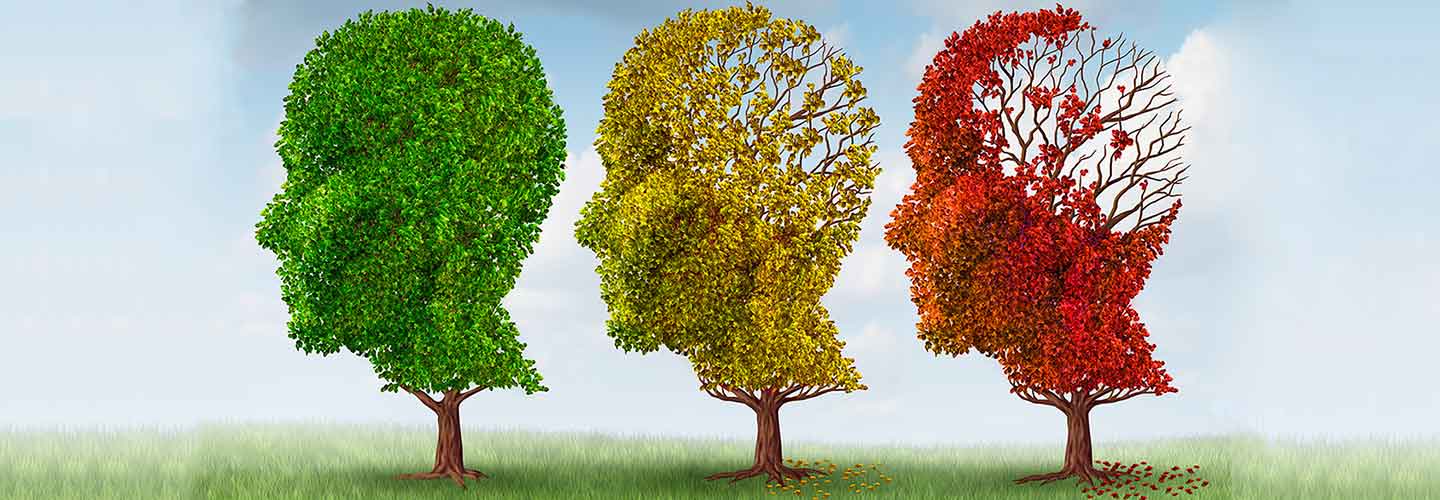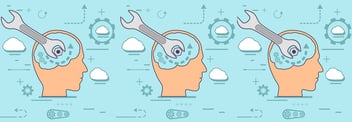DNA… Nurture Your Nature – Session Six
- Home
- Blog

Is Alzheimer’s Disease Preventable by Unclogging the Brain’s “Sewer System”?
DNA+Environment+Triggers+Chance = Your Brain Health
A Whole Brain, or Holes in Your Brain, Which Shall it Be?– Bruce Alan Kehr, M.D.
Reader, I have a patient, let’s call him Jim, whose father (age 85) has lived in a nursing home for over six years. Physically, his father is the picture of health, and suffers from no significant limitations. Mentally, he is in a sad and horrific place, as “He” (the person his loved ones once knew him to be) is “gone.” His friends and family are unrecognizable to him, and his memories have become inaccessible. When Jim’s dad has moments of clarity—for instance, when he can recall with a smile his glory days as a well-known doctor in town, with an intelligent wife and four bright young children, Jim describes them to me as if he’s speaking of a rare and precious gem—and he treasures them as such. However, his father’s healthy body and failing mind (a common paradox that is perhaps the cruelest aspect of many dementias) causes Jim great psychic pain. His father is no longer the man he grew up admiring. As Jim put it, “I just hate seeing him become progressively more enfeebled.” What Jim was witnessing with his father was not the natural aging process. No—his father had Alzheimer’s Disease, the most common cause of dementia, causing loss of memory and cognitive functioning, deteriorating personality functioning, behavior control problems, and poor judgement, among others. Progressive dementia is not the natural state in old age. It is a symptom of a dreaded disease. And, as it so happens, its underlying disease process, which begins to develop 20+ years prior to diagnosis in the brains of vulnerable individuals, is one that must be detected and attacked as soon as possible, before it becomes irreversible. But how can we determine who is vulnerable? How can we fend it off? Dear reader, stay tuned!
Like many family members who have a loved one suffering from dementia, Jim’s helplessness was twofold: he felt helpless to aid his father, but he also felt helpless about altering the course of his own future. He knew of others where “Alzheimer’s runs in their family.” I knew as he explained this to me that Jim needed to hear one message loud and clear: through the power of DNA testing and epigenetic modifiers, we are not irrevocably helpless. We have the power to alter our future—even slow or prevent our cognitive decline and aging—through knowledge and the adoption of healthy habits. For the last five weeks, I’ve introduced you to the underlying principles behind both my new blog series, “Nurture Your Nature”, as well as Genomind’s* Mindful DNA genetic test. By now, you’re well familiar with systems biology and how epigenetic factors can upregulate or downregulate “risk” genes—genes that leave you more prone to disease—to enable one to become less likely to develop that disease. In this post and next week’s post, we’re putting all of our genomics vocabulary words into practice by taking a closer look at a fascinating new possible cause for Alzheimer’s disease, and how you can use non-prescription, over-the-counter remedies to fight against cognitive decline.
Alzheimer’s Disease: The Basics
Mindful DNA tests 32 genes nested within six distinct yet interconnected systems: sleep, gastrointestinal and immune, inflammation, cardiometabolic, stress and emotional wellbeing, and cognition and mental acuity. Even without any explanation, you may already see this disease devastating at least two of these systems—stress and emotional wellbeing along with cognition and mental acuity. Indeed, as stated by the Alzheimer’s Association, “Alzheimer’s is a progressive disease, where dementia symptoms gradually worsen over a number of years. In its early stages, memory loss is mild, but with late-stage Alzheimer’s individuals lose the ability to carry on a conversation and respond to their environment.” There’s no cure for this disease, and current treatments can’t stop the disease from relentlessly progressing—instead, they simply slow the rate of decline.
As you may have guessed, given its association with cognitive decline and disturbed mental functioning, Alzheimer’s disease lives primarily in the brain. The current theories suggest two significant contributors to the disease may be protein deposits building up in the spaces between nerve cells in the brain and inside the cells themselves, (known as Amyloid Beta “plaques”) and other proteins that get twisted and built up inside the cells itself (known as Tau protein “tangles”). Tau also (kind of like a virus) can spread from cell to cell where it multiplies and wreaks further havoc. As a disease that is still being heavily researched, these are the concrete facts scientists generally agree upon—but much remains unknown. but why do Amyloid and Tau proteins build up, aggregate, and cause cellular damage? Are there genetic clues? If so are there epigenetic modifiers that prevent these dreaded, dangerous deposits?
Alzheimer’s Disease and Cognitive Decline: A Cause for Hope?
Let’s return for a moment to those plaques and tangles. It’s been stated for years that Alzheimer’s is thought to be caused by a “build-up” of certain proteins in and around the brain cells—but recently, scientists have returned to the question of cause by reframing the key noun in that sentence—“build-up”—to an adjective… “building up”. Whereas build-up suggests merely the outcome, a consequence that occurs perhaps outside of our own control, “building up” suggests a process, something we might control, or at least modify. Let’s consider this notion using an analogy: imagine you’re walking along a beautiful pier that connects the coast to the great blue ocean. As you watch the water wash beneath your feet, you spot what seems to be a million mussels growing on the wood planks that secure the pier to the ocean floor. Those mussels could be described as a “build-up”. But, do you think they were there when the pier was first built? Of course not! They built up over time—perhaps over many years, in fact—attaching themselves to what once was pure, smooth wood.
Perhaps you see what I’m getting at here. For decades, physicians have been treating Alzheimer’s like the mussels that appear on the pier: they’re simply there, and any treatment is therefore not preventative but palliative. New, and in fact thrilling research flips that narrative on its head, instead suggesting that Alzheimer’s develops over decades… thus giving us years and years to consider, discover, and explore preventive habits to delay its onset—or prevent it altogether.
The Glymphatic System: A New and Intriguing Field of Study
Let’s return yet again to the plaques and tangles. Now, build-ups usually occur due to a lack of ability to flush them out of a system—whether that system is your dishwasher drain or your digestive tract. And in fact, our bodies have extremely complex systems to eliminate waste (like one’s kidneys and liver), that provide cleanup services whether that waste is in your stomach or your blood or anything in between. Besides preventing build-ups from occurring, these systems are critical to ensuring homeostasis within our bodies (and therefore our minds). Within the last decade, scientists have discovered a new and profoundly important system of elimination—and this one centers around your central nervous system… in other words, the hotbed for those plaques and tangles. This system is known as the “glymphatic system” and is defined as a “macroscopic waste clearance system… formed by astroglial cells to promote efficient elimination of soluble proteins and metabolites from the central nervous system.” Charged with “rinsing out” our central nervous system of unneeded materials like proteins (think, “the brain’s toilet and sewer system”), if our glymphatic system is not highly functioning, build-up can slowly occur. Over decades this initial (and initially reversible) buildup results in the destruction of brain cells, synaptic connections, the myelin sheaths that enable brain circuits, the blood supply to these cells, and more. So what can we do to keep this most important system up and running? Well, the answer has everything to do with systems biology and epigenetics:
As it so happens, the glymphatic system “turns on” and does the overwhelming majority of its work when we’re asleep. There are other methods one can use to improve the brain’s sewer system that we will cover in future blogs, if you just stay tuned…
Conclusion
Reader, some psychiatrists believe they’re operating on a higher intellectual level than the patients they see. I’m not one of those doctors. I believe in my patients’ intellect and eagerness to understand, and that we must partner together on our mutual journey toward healing. When I explained to Jim how Alzheimer’s works and what the latest research suggests about long-term prevention, and genetic tests we can perform to determine his risk and how we might lessen it, his understanding of both his father and his future grew—and he felt a whole lot better about his destiny knowing he may be able to exert some control. Alzheimer’s—its causes and its outcomes—affects the whole person and their entire family. Its development and progression is affected by inflammation, sleep, cardiovascular disease, insulin resistance, stress response, and the expression of certain genes in the brain. It is therefore a perfect example of systems biology at work.
Next week, we’re going to take our understanding a bit further and dive into the scientific research even more to give you a fuller picture of Alzheimer’s disease and what you can do to prevent it. Until then, please keep in mind: don’t submit to becoming the passive observer of your own fate as it unfolds. It’s within your power to make the necessary changes toward health-promotion. You just need the right information and the will to act!
.png?width=144&height=144&name=Untitled%20design%20(34).png)



